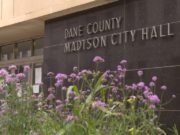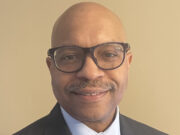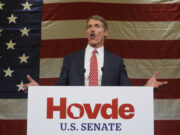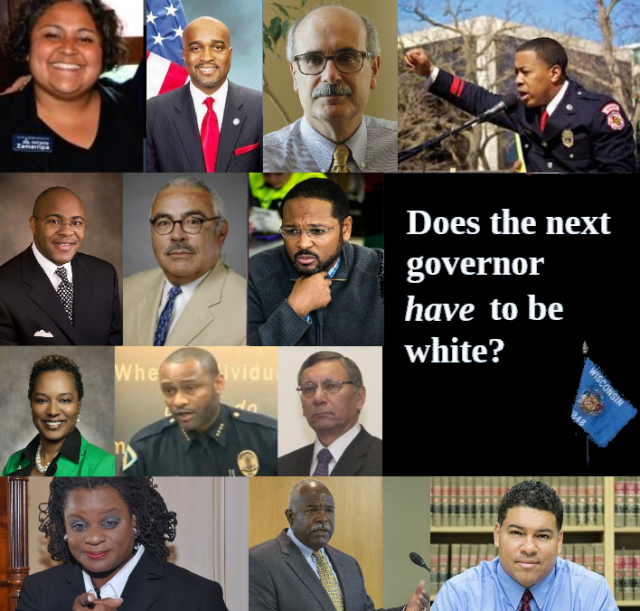The mainstream media are already looking ahead to the 2018 race for Wisconsin governor, as they should. Governor Scott Walker’s approval rating still hovers at a dismal 38 percent, but he’s won three elections in the last eight years — two regular elections and a recall. He says he’ll decide whether to seek a third term after next year’s budget process. Whether he does or not, it’s certainly not too early to start speculating — as we in the media just love to do — about who the Dems might put up.

The most recent public list of potential candidates lists a few serious contenders, like Dane County Executive Joe Parisi and State Senators Kathleen Vinehout and Tim Cullen, as well as a few dark horses, like Jefferson County District Attorney Susan Happ and Outagamie County Executive Tom Nelson, who’s currently focused on a run for Congress. It includes current elected officials as well as business leaders. It’s a good variety of influential and accomplished people.
It’s just … not quite the variety it could have been.
It’s hard not to notice that the entire list is white. We aren’t sure whether leaders and politicians from communities of color should feel truly insulted, or whether this is just a simple oversight. We aren’t here to say any list of candidates should include token people of color; rather we are here to say any list that includes one District Attorney who ran for Attorney General — Happ — could and maybe should include another, Ismael Ozanne. A list that includes a prominent business leader like Kevin Conroy could easily include another, like, say, Cory Nettles.
It’s a curious oversight. At a time when Madison, Milwaukee and even the entire state are consistently ranked among the worst places to live for people of color, surely it ought to occur to media and political operatives to highlight at least one or two people of color successful enough to aspire to the governor’s office. Not only that, but our first black president enjoys an approval rating of 53 percent in Wisconsin — two points higher than a month ago. Surely electing a person of color is not outside the realm of possibility in Wisconsin.
Now, we aren’t just going to point this oversight out. We’re going to offer a remedy by putting forward our own list of people of color who, whether or not it’s likely at this point two years ahead of the election, are just as capable of mounting a statewide campaign as anyone on the other list.
We’re doing this because any list like this implies a limit to the scope of the people who could be on it. In this specific instance, when your list of potential gubernatorial candidates is all white, you imply — intentionally or not — that the next governor will be and must be white. This has an effect not only on current politicians of color who could claim a legitimate stake to the Democratic nomination, but it also has an effect on the young people who read it and their aspirations to get into public service. If they don’t see anyone who looks like themselves on a list like this, they’ll be less likely to see a future in politics for themselves.
You might say that as journalists, it’s not our job to encourage or discourage anyone to do anything, just to report the facts. But the “fact” being reported in a list of 12 white politicians is that the next governor must be white, and there are no people of color with any credible chance to earn the Democratic nomination.
We just don’t buy that fact.
So without further ado, here are 13 other Democrats, people of color, who could, we think, mount a campaign for governor over the next two years.
 Juan Colas. “I prosecuted sexual predators” is a pretty good way to open a campaign ad. As assistant attorney general, Colas did just that. He’s also a bilingual immigrant from Colombia with a compelling backstory — his language skills got him a job as a court interpreter, and he’s been on the rise ever since. Appointed to the bench by Governor Jim Doyle in 2008, he’s also got electoral experience, winning re-election twice.
Juan Colas. “I prosecuted sexual predators” is a pretty good way to open a campaign ad. As assistant attorney general, Colas did just that. He’s also a bilingual immigrant from Colombia with a compelling backstory — his language skills got him a job as a court interpreter, and he’s been on the rise ever since. Appointed to the bench by Governor Jim Doyle in 2008, he’s also got electoral experience, winning re-election twice.
Enrique Figueroa. Dr. Figueroa is an administrator dedicated to serving Latino students at UW-Milwaukee, but he could rely on an earlier career to make a run for governor. He’s got the executive management chops, overseeing 15,000 employees and a $2 billion budget as President Bill Clinton’s undersecretary of agriculture — which also happens to remain one of Wisconsin’s most important industries. His level of expertise in the mainstay of the state’s economy is a unique qualification.
 Ashanti Hamilton. The Milwaukee Common Council president would be a relative unknown to people in Madison and around the state, but that can be an advantage sometimes — he’d be able to define himself and his own message without a lot of baggage. In February, the Common Council unanimously elected him to oust Michael Murphy as president, giving him a mandate to unite Milwaukee’s north and south sides in the midst of a crime crisis. He has the confidence of his colleagues; could he turn that into a mandate to unite Wisconsin? The endorsement of the entire Milwaukee Common Council could certainly get him off to a good start in fundraising, and any success he has over the next year or so could go a long way to convincing statewide voters to give him a shot.
Ashanti Hamilton. The Milwaukee Common Council president would be a relative unknown to people in Madison and around the state, but that can be an advantage sometimes — he’d be able to define himself and his own message without a lot of baggage. In February, the Common Council unanimously elected him to oust Michael Murphy as president, giving him a mandate to unite Milwaukee’s north and south sides in the midst of a crime crisis. He has the confidence of his colleagues; could he turn that into a mandate to unite Wisconsin? The endorsement of the entire Milwaukee Common Council could certainly get him off to a good start in fundraising, and any success he has over the next year or so could go a long way to convincing statewide voters to give him a shot.
Lupe Martínez. The United Migrant Opportunity Service president might be the most influential Latino in the state of Wisconsin. Over more than 40 years, he has led UMOS to grow into one of the largest Hispanic non-profits in Wisconsin. UMOS focuses on three major initiatives: child development, social services and workforce development — all critical needs, and issues that voters respond to. A deep understanding of and commitment to those issues could make him tough to debate. Further, UMOS runs 40 statewide programs, so Martínez already has a statewide network ready to be activated. It might seem like a big leap from the nonprofit world into the governor’s office, but don’t forget there’s a former community organizer in the White House.
 Mahlon Mitchell. The president of the Professional Firefighters of Wisconsin was thrust into the public eye during the fight over Walker’s Act 10, which gutted public sector labor unions. Mitchell and his fellow firefighters worked tirelessly to push back against that bill, and Mitchell earned significant cred among the still-important labor vote. That advocacy — as well as his youthful energy — earned him a major vote of confidence among Democrats when they nominated him to run for Lieutenant Governor alongside Milwaukee Mayor Tom Barrett in the 2012 recall election. He remains relatively young at just 39, and may have plenty more opportunities to seek office; his energy and labor support could really shake up the 2018 race, though.
Mahlon Mitchell. The president of the Professional Firefighters of Wisconsin was thrust into the public eye during the fight over Walker’s Act 10, which gutted public sector labor unions. Mitchell and his fellow firefighters worked tirelessly to push back against that bill, and Mitchell earned significant cred among the still-important labor vote. That advocacy — as well as his youthful energy — earned him a major vote of confidence among Democrats when they nominated him to run for Lieutenant Governor alongside Milwaukee Mayor Tom Barrett in the 2012 recall election. He remains relatively young at just 39, and may have plenty more opportunities to seek office; his energy and labor support could really shake up the 2018 race, though.
 Gwen Moore. The outspoken and unabashed United States Congresswoman from Milwaukee is a gifted orator and not afraid to use her office to make a point — as she did earlier this year when she proposed legislation to require drug tests for anyone receiving tax breaks and participated with fellow members of Congress in a sit-in to demand action on gun control. She’s beloved in her district and could bring a solid liberal contingent of donors and voters to a statewide race.
Gwen Moore. The outspoken and unabashed United States Congresswoman from Milwaukee is a gifted orator and not afraid to use her office to make a point — as she did earlier this year when she proposed legislation to require drug tests for anyone receiving tax breaks and participated with fellow members of Congress in a sit-in to demand action on gun control. She’s beloved in her district and could bring a solid liberal contingent of donors and voters to a statewide race.
 Michael Morgan. The former secretary of Revenue and then Administration has been the senior vice president in charge of administration and finance at the UW System since the end of the Doyle administration. He’s known for working behind the scenes, more a do-er than a talker. He could, though, make the case that a calm and steady hand is needed to guide us back to the Wisconsin way, and he could make a very credible case that he’s the man with that hand. He’s also known as a good friend of the last Dem governor — perhaps his candidacy could bring Doyle out of obscurity to campaign.
Michael Morgan. The former secretary of Revenue and then Administration has been the senior vice president in charge of administration and finance at the UW System since the end of the Doyle administration. He’s known for working behind the scenes, more a do-er than a talker. He could, though, make the case that a calm and steady hand is needed to guide us back to the Wisconsin way, and he could make a very credible case that he’s the man with that hand. He’s also known as a good friend of the last Dem governor — perhaps his candidacy could bring Doyle out of obscurity to campaign.
 Cory Nettles. Governor Jim Doyle’s first Commerce Secretary is now a business attorney at Quarles & Brady in Milwaukee and, perhaps more importantly, founder and managing partner of Generation Growth Capital, “a private equity fund focused on buyouts and providing growth capital to small businesses and lower-middle market companies in the upper Midwest,” according to the firm’s website. Anyone who could make as a pro-business and financially savvy (or brilliant) Democrat would certainly fare well among moderates, and Nettles could turn that Milwaukee clout — and Milwaukee campaign donations — into a solid statewide campaign.
Cory Nettles. Governor Jim Doyle’s first Commerce Secretary is now a business attorney at Quarles & Brady in Milwaukee and, perhaps more importantly, founder and managing partner of Generation Growth Capital, “a private equity fund focused on buyouts and providing growth capital to small businesses and lower-middle market companies in the upper Midwest,” according to the firm’s website. Anyone who could make as a pro-business and financially savvy (or brilliant) Democrat would certainly fare well among moderates, and Nettles could turn that Milwaukee clout — and Milwaukee campaign donations — into a solid statewide campaign.
 Ismael Ozanne. The Dane County District Attorney hasn’t shied away from controversy, and it hasn’t hurt him. He handily won his recent primary and will not face a challenger in the fall, so he’ll retain his platform as the top prosecutor in the state’s second largest county. He also has statewide name recognition — critical in a gubernatorial race — thanks to a vigorous campaign for attorney general last year.
Ismael Ozanne. The Dane County District Attorney hasn’t shied away from controversy, and it hasn’t hurt him. He handily won his recent primary and will not face a challenger in the fall, so he’ll retain his platform as the top prosecutor in the state’s second largest county. He also has statewide name recognition — critical in a gubernatorial race — thanks to a vigorous campaign for attorney general last year.
 Antonio Riley. He spent a decade in the State Assembly beginning in 1992 — some time ago, but he certainly still has the political chops it takes to campaign. He’s currently one of the highest-ranking presidential appointees in the midwest, serving the Obama Administration as the Regional Administrator for the Department of Housing and Urban Development. He could make a strong case that his experience makes him uniquely qualified to jumpstart the state’s economy, which has dragged behind national growth rates during the Walker years.
Antonio Riley. He spent a decade in the State Assembly beginning in 1992 — some time ago, but he certainly still has the political chops it takes to campaign. He’s currently one of the highest-ranking presidential appointees in the midwest, serving the Obama Administration as the Regional Administrator for the Department of Housing and Urban Development. He could make a strong case that his experience makes him uniquely qualified to jumpstart the state’s economy, which has dragged behind national growth rates during the Walker years.
 Lena Taylor. Another Milwaukee firebrand, State Senator Taylor has more than a decade’s experience in the Capitol, where she’s known as both an outspoken advocate for underrepresented populations and a coalition builder among legislators. She enjoys solid support in the 4th District, where earlier this week she easily turned away a primary challenge from Assembly Representative Mandela Barnes. As a veteran of the capitol, she could also marshall significant support in the state’s other liberal stronghold of Madison.
Lena Taylor. Another Milwaukee firebrand, State Senator Taylor has more than a decade’s experience in the Capitol, where she’s known as both an outspoken advocate for underrepresented populations and a coalition builder among legislators. She enjoys solid support in the 4th District, where earlier this week she easily turned away a primary challenge from Assembly Representative Mandela Barnes. As a veteran of the capitol, she could also marshall significant support in the state’s other liberal stronghold of Madison.
 Noble Wray. The relationship between the police and the communities they serve will be a central issue of almost every campaign next year. Wray served as Madison’s Police Chief for nine years relatively free of controversy. His years as chief followed 21 years as an officer, and he now serves President Obama, leading the newly-formed Policing Practices and Accountability Initiative. Thanks to this career trajectory, he has serious credibility on both sides of debates over law enforcement, not to mention considerable executive experience.
Noble Wray. The relationship between the police and the communities they serve will be a central issue of almost every campaign next year. Wray served as Madison’s Police Chief for nine years relatively free of controversy. His years as chief followed 21 years as an officer, and he now serves President Obama, leading the newly-formed Policing Practices and Accountability Initiative. Thanks to this career trajectory, he has serious credibility on both sides of debates over law enforcement, not to mention considerable executive experience.
 JoCasta Zamarripa. The Assembly representative of Milwaukee’s downtown and south side became the first Latina in the State Legislature in 2010, and was re-elected three times, never gaining less than 83 percent of the vote. That kind of overwhelming support in Milwaukee could outweigh any weakness she has outstate. She is also one of four members of the legislature to identify as LGBT, a voting block that’s never been more influential, both in grassroots organizing and in fundraising.
JoCasta Zamarripa. The Assembly representative of Milwaukee’s downtown and south side became the first Latina in the State Legislature in 2010, and was re-elected three times, never gaining less than 83 percent of the vote. That kind of overwhelming support in Milwaukee could outweigh any weakness she has outstate. She is also one of four members of the legislature to identify as LGBT, a voting block that’s never been more influential, both in grassroots organizing and in fundraising.




































